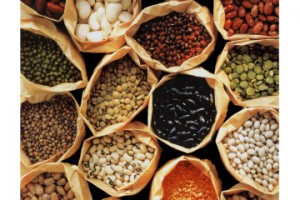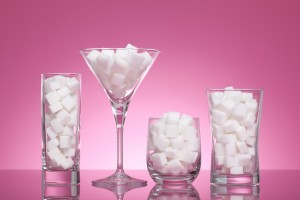on Nov 20, 2013 in Nutrition, Weight Loss, Wellness Blog
The Amazing Truth about Beans! When studies compared the nutrition habits of people from Japan, Greece, Sweden, and Australia looking for foods connected with longevity they found only one food group in common, BEANS! It seems that all types of beans are connected with longevity and it doesn’t even require eating large amounts of beans. Researchers found for every 2 Tbsps. of beans people ate their risk of death decreased by 8%. When you consider how much money people spend on vitamins and minerals every day – isn’t it amazing that one of the most economical foods, the lowly bean, packs much more punch for your health than any supplement can deliver. In our stampede for easy convenient foods it seems most of us have forgotten about the humble bean. But this is to our great disadvantage, as beans offer some of nature’s finest health benefits. When comparing health protectant properties of foods the most powerful super foods with the highest antioxidant properties are all beans. The number one power-food are black beans followed by lentils (red was the healthiest), and then kidney beans. If that isn’t enough to make you whip up a pot of chili than consider these facts: eating just half a cup of beans a day for two months can result in a 20 point drop in serum cholesterol; beans reduce blood pressure and inflammation; the unique fibers found in beans curb appetite and help with weight loss; beans may be protective against certain cancers; and beans are a great source of protein, zinc, folic acid, and fiber (1 cup = 16 grams.) Most of us forget that coffee is a bean and yes it too has health benefits. Coffee in particular appears to be protective against diabetes, liver cancer, and brain cancer. The best way to purchase beans is dry and then cook them. The plastic lining used in most canned beans often contains a chemical called BPA which has been linked to cancer, so either cook them from scratch or try Eden canned brands which do not use this chemical. Trader Joe’s has several quick-cook options. Look for their pre-cooked lentil salads, soups, humus dips, and frozen vegetable/bean dishes. Beans are easy to store and can sit on your shelf waiting to be cooked without...
Read More
on Nov 13, 2013 in Nutrition, Uncategorized, Weight Loss
Fill your cart with healthy options! When you make healthy choices at the grocery store, it’s easier to keep making them every day at home. Arm yourself with these smart shopping tricks to avoid supermarket temptations. Before you go Plan your meals first. List what you will eat and drink for each meal over the next week. If you are using recipes, check to see which ingredients you have already and what you need to buy. Don’t forget breakfast. Healthy breakfast foods — like eggs, whole-wheat toast, whole-grain cereal, low-fat granola, and low- or nonfat yogurt — can help manage your weight. Look for breakfast foods without added sugars on the label. Stock up on sides and snacks. Smart snacks like nuts, pretzels, and sliced fruit are quick and easy. And don’t forget lots of vegetables that you can snack on raw, or steam, roast, or stir-fry. Whole grains, such as brown rice, bulgur, and quinoa also make deliciously healthy sides. Organize your list by food type. Organizing your grocery list by food types not only makes it easier to shop efficiently, it also makes it easier to skip the junk food aisles. For example, you could organize your list like this: fresh fruits and vegetables breads and whole grains canned goods frozen foods meat, fish, and poultry dairy and eggs What’s in store? Avoid the bakery section. To boost sales, stores make sure shoppers can smell the cakes and cookies in their bakery section. They may be fresh, but they’re full of sugar, fat, and empty calories. Head for the pre-packaged whole-grain breads instead. Don’t shop hungry. If your stomach is growling, you are more likely to buy unhealthy foods (and too much of them). Shop after a meal, or eat a small healthy snack before you go. Look high and low. Tempting items are often placed at eye level on the supermarket shelves. Check out the items higher and lower on the shelves, which can be better choices and less expensive, too. Stick to the edges. Try to shop around the outside aisles of the grocery store, where the fresh produce, dairy, and meat are usually found. Go down the other aisles only if you need a...
Read More
on May 7, 2013 in Nutrition, Weight Loss, Wellness Blog
Kaiser Permanente is sponsoring the launch of a three-part documentary film series, The Weight of the Nation for Kids, on HBO. As part of the organization’s continued efforts to promote a national conversation about obesity, Kaiser Permanente is sponsoring the launch of a three-part film series, The Weight of the Nation for Kids, which premieres May 7 on HBO. In addition to HBO, Kaiser Permanente is partnering with the Institute of Medicine, the Michael & Susan Dell Foundation, and the Centers for Disease Control and Prevention on this launch. Each film in the series spotlights youth who are taking the initiative to change the food and physical activity environments in their communities to combat the growing childhood obesity epidemic. Childhood obesity remains a pressing health issue, and there is an urgent and unmet need to inform communities about its risk factors. According to a recent national survey by the Institute of Medicine, at least 34 percent of American adults are overweight, and an additional 34 percent are obese. Among children, 32 percent meet the definition of being overweight or obese, with more than half of those in the obese category. A Groundbreaking Documentary The Weight of the Nation for Kids will help to increase national awareness and public engagement, inspiring kids to make healthy change happen in their own communities. The films contain critical and useful information we can apply to our own lives and share with our families, members, patients and communities. “Childhood obesity has reached epidemic proportions and has led to chronic conditions among our nation’s youth,” said Raymond J. Baxter, PhD, Kaiser Permanente’s senior vice president for Community Benefit, Research and Health Policy. “It’s clear that we must act now to improve the environments in which we live, work, learn and play.” The documentaries use scientific fact and compelling testimonials to illustrate the health consequences of obesity and excess weight in youth. They share inspiring stories of perseverance and drive, highlighting youth groups and individuals who have made real progress in improving the health of their schools and communities. The films include: The Great Cafeteria Takeover, which follows a group of kids in New Orleans who set out to make a difference in their community during the...
Read More
on Nov 29, 2012 in Fitness, Nutrition, Weight Loss, Wellness Blog, Wellness Seminar
Kaiser Permanente provides FREE Wellness Coaching by Phone; this personalized service assists you in reaching your lifestyle and wellness goals. Coaching is provided on five topics: Quit Tobacco; Get Active; Eat Healthy; Manage Weight; or Reduce Stress. Wellness Coaches partner with you to focus on healthy habits, create a customized plan, and schedule convenient telephone sessions. Wellness coaches use an evidence-based methodology to help boost your motivation and confidence to be successful. Must be a member of the Kaiser Permanente health Plan to participate. No referral is needed to access wellness coaching. Members can call the new phone number, (866) 862-4295, for an appointment. Wellness Coaching by Phone is available Monday through Friday, 6 a.m. to 7...
Read More
on Mar 2, 2012 in Nutrition, Weight Loss, Wellness Blog
Get the PDF version of this article By Vicki Pepper, M.S., R.D., Kaiser Permanente, San Diego California When Emperor Darius invaded India in 510 B.C. he called it, “the reed which gives honey without bees.” The Crusaders called it sweet salt when they brought it to the European continent, and white gold is what the British called it in 1750 when it became the most valuable crop produced in all of Europe. Today we call it sugar and it is considered a basic food staple of the American diet. Sugar even rates a spot on the government food pyramids. Most Americans rarely go a day without consuming one form of sugar or another. We add it to just about everything—even ketchup, medicines, and baby food. The truth is that sugar is relatively new to the food chain. Unlike nuts, seeds, fruits, meats, and wild grains which have been found in the guts of primitive man and have been part of our consumption since our earliest history, sugar was discovered a mere 8,000 years ago and, until the last 40 years, people consumed very little of it. The harvesting and the making of sugar originated in New Guinea and then quickly spread to Polynesia, Indonesia, and eventually Northern India where it stayed until the seventh century. When Arabic peoples invaded India they quickly recognized sugar as valuable crop and carried the harvesting techniques to their conquered territories throughout the Arabian Peninsula where the technology stayed until the 11th century. It was the Crusaders who carried what they called sweet salt to Europe and later Columbus carried it across the seas to the Americas. Despite being of a substance of great desire, sugar was hard to come by, very expensive, and was something reserved for nobility and the very rich. So difficult were the conditions of harvesting it, that sugar is credited with the birth of African slavery as slaves were imported throughout the world to harvest sugar cane. It wasn’t until the 18th century that sugar was produced in enough quantities to become something the general public could afford and not until the early part of the 21st century that it was affordable enough to become a daily staple. In 1930,...
Read More




